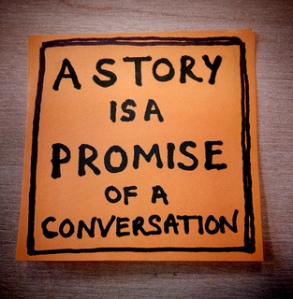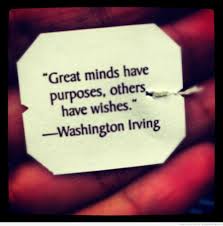The Future of Marketing Summit 2015: Collisions and Complexity #FTMarketing is always a treat to attend. While conference attendance continues to drop these days, the live conferences allow us to share our real time views in more than 140 characters, giving some additional color to the speaker comments.
The conference explored relevance and personalization —objectives that marketers always strive to achieve — regardless of the available technology and in spite of the available technology.
“Content is king. Context is queen and she wears the pants.”
Big data and the balance of personalized messaging, limited budgets and the creep factor caused by revealing the knowledge of too much individual data, continue to be a dominant subject on everybody’s mind. Ad-blocking is a relevant piece of the conversation as it impacts so many of the content development and customization strategies that we all are exploring.
 With so much free content available, what motivates someone to share the information that allows us/them to customize their stream of news? The answer lies in the value proposition. The importance of which is not new; the newness is in the never-ending expansion of resources that we can use to meet our needs.
With so much free content available, what motivates someone to share the information that allows us/them to customize their stream of news? The answer lies in the value proposition. The importance of which is not new; the newness is in the never-ending expansion of resources that we can use to meet our needs.
Hence, if I can get the information elsewhere, I will get it wherever it is easiest and most obviously synergistic.
- Exemplifying this example was Seth Farbman, CMO at Spotify. Consumer access to music at little to no cost delivers huge exposure for the artist. For those artists who do not have the marketing and label support, Spotify sees themselves as an avenue for artist exposure. Their goal is to build music fans. The majority of their users do not pay fees. However, the Spotify service is not free; it is advertising supported. Hence what happens to this business model when users go incognito?
Knowing that “Content is king. Context is queen and she wears the pants.” What can the marketer do to ensure the right experience for the individual customer? Simultaneously, what can be done to maintain advertising dollar supports? Maintaining a robust exchange of information is paramount.
- Businesses that are using Virtual Reality (VR) provided a good example of creating customer relevancy. In fact, one of the panelists shared his own story; it involved a dislike for camping activities which ended in the booking of a camping trip after a VR experience. Sounds like the adage: Try it. You’ll like it. Virtual Reality brings us closer to the experience than any copy deck or photo montage could achieve.
Storytelling: A Strategic Business Tool
 And, when VR is not possible, we know that a well-delivered story format is a readily affordable tactic to initiating an immersive brand experience. In the panel titled “Shifting the Brand Strategy in the Age of Empowered Consumer”, one message was unanimous: Brands can no longer speak to the customer. Rather, brands must speak with the customer. Be it a consumer or a B2B transaction, the human being will make a decision and individuals want to buy things that reflect smart decisions and which make them feel like they are adding value to the situation.
And, when VR is not possible, we know that a well-delivered story format is a readily affordable tactic to initiating an immersive brand experience. In the panel titled “Shifting the Brand Strategy in the Age of Empowered Consumer”, one message was unanimous: Brands can no longer speak to the customer. Rather, brands must speak with the customer. Be it a consumer or a B2B transaction, the human being will make a decision and individuals want to buy things that reflect smart decisions and which make them feel like they are adding value to the situation.
When is yes a maybe? Marketers are still figuring this out.
Unraveling what the customer wants will continue to be an ongoing riddle. The true psycho-graphics behind one’s behavior are rarely available on an individual basis and just because someone looks at a website does not mean they want to use or buy the product….a challenge with programmatic marketing.
As marketers, we want to test everything to see how we can better create a dialogue with our customer groups. However, social media is still being challenged to prove the consistency of the measurable impacts that the tactics generate for a campaign.
- There was an audible chuckle in the audience when Roel de Vries, Global Head of Marketing and Brand Strategy at Nissan Motor Company spoke to the “hobby-ism of doing things. If I have to sell x million cars, is 10,000 hits good enough to get me there?” And, hence, we must again balance testing opportunities with scale impact and the budget allocation.
The Basic Human Need for Emotional Resonance
As technology continues to alter the way we consume data for our decisions, there was chatter amongst the room for another proven behavior: The continued need for emotional resonance. No matter how technological our society has become, in the end, we are individuals with numerous personas that are all actively in play at any given time.
Reminding us of this basic human nature was the five step ecosystem that individuals use to make decisions. The buzz words have changed over time however the concepts remain intact. The five step ecosystem is: 
- Notice: Get noticed. Create awareness.
- Curiosity: Generate interest.
- Interaction: Offer an array of opportunities for interaction and the query for more information. Engage the customer/prospect in a dialogue that makes the impact of this product in their lives real.
- Reinforcement: Create on-going reinforcement of the purchase decision.
- Evangelize: With the ultimate goal of turning the customer into an evangelist your product
Some things do not change; they get modified and fine-tuned to reflect the modern-age tools.
Relevance, personalization and service excellence continue to be the critical success factors in establishing long term relationships.
If you found any of the subjects in this post to be of interest to you, please get in touch and lets continue the conversation.
Thank you to the Marketing Executives Networking Group MENG for my ticket. to this event.
 A business acquaintance recently referred to herself as a PIP – a “Previously Important Person”. While I chuckled, I was also saddened by the expression. With the daily transitions that each of us are making through professional responsibilities, child-rearing, parent caregiving, volunteer roles and more, we will often move into and out of the spotlight.
A business acquaintance recently referred to herself as a PIP – a “Previously Important Person”. While I chuckled, I was also saddened by the expression. With the daily transitions that each of us are making through professional responsibilities, child-rearing, parent caregiving, volunteer roles and more, we will often move into and out of the spotlight.




 Waiting on a store check-out line, I listened to the telephone conversation of the person standing behind me. The dialogue was around customer service. “ I want my customers to receive the best possible customer service from my staff. At the same time”, he continued, “I will not allow my own staff to be bullied or intimidated.”
Waiting on a store check-out line, I listened to the telephone conversation of the person standing behind me. The dialogue was around customer service. “ I want my customers to receive the best possible customer service from my staff. At the same time”, he continued, “I will not allow my own staff to be bullied or intimidated.”




